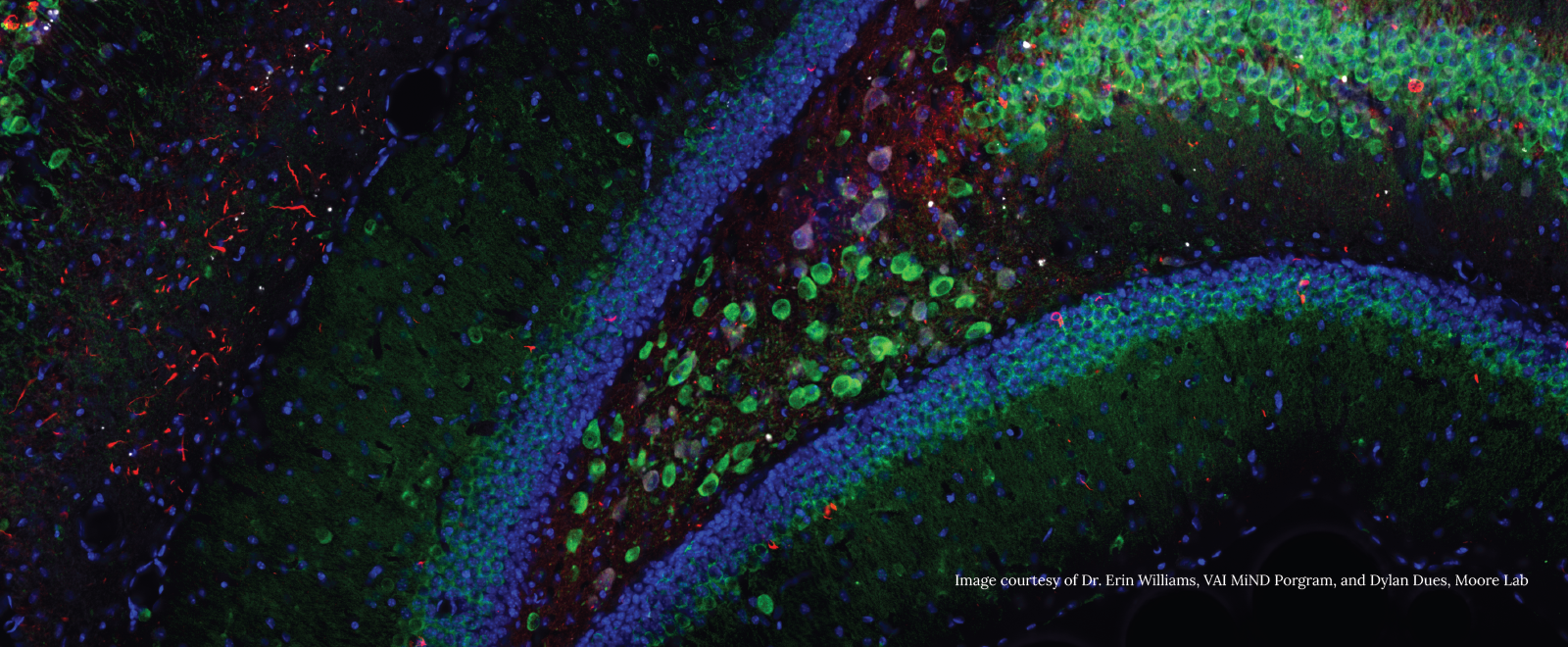To understand how and why Parkinson’s disease starts and progresses, we need to investigate the changes that occur in the brain and throughout the body.
“Pathophysiological mechanisms” is a technical, catch-all term for these biological shifts, which push healthy cells and tissues into disease.
Put another way, pathophysiological mechanisms are the physical fingerprints of disease. They offer important clues to scientists seeking to translate discoveries into new ways to prevent, diagnose and treat Parkinson’s.
This is important because current Parkinson’s medications only treat symptoms. A better understanding of pathophysiology will provide new opportunities for disease modification; that is, treatments that actually slow or stop disease progression.
How might this work? Let’s take a look at a few examples.
Technical term: Protein aggregation
Translation: Sticky proteins that clump together and cause problems
Proteins are the workhorses of the body. They are responsible for virtually every process that keeps our systems up and running.
Their ability to properly do their jobs is directly tied to their structure. In many neurodegenerative diseases, key proteins become misshapen. This in turn causes proteins to stick together, forming clumps (or aggregates) that interfere with cells’ ability to function and survive.
In Parkinson’s disease, the problematic protein in question is called alpha-synuclein. Abnormal alpha-synuclein sticks together to form clumps called Lewy bodies, which clog the innerworkings of cells and cause them to die.
The death of these cells — and the loss of the important chemical they produce, dopamine — results in the hallmark symptoms of Parkinson’s.
Scientists are hard at work investigating why alpha-synuclein changes from normal to abnormal and how this process contributes to disease. This information may be a critical component of potential future therapies designed to slow or stop disease progression.
Technical term: Endolysosomal pathway
Translation: Our cellular housekeeping systems
Our cells produce a lot of trash.
This assortment of broken bits and bobs gets in the way of healthy function. So, just like us, cells need some way to clear out the garbage.
That’s where the endolysosomal pathway comes in. This molecular network acts as a cellular housekeeper that breaks down and recycles all the debris cells accumulate as part of their proverbial day.
In Parkinson’s disease, evidence suggests that this critical housekeeping system breaks down. This allows junk (such as misshapen alpha-synuclein proteins) to pile up, sickening and killing cells.
Developing treatments that fix problems in these vital processes is a major area of interest for scientists searching for improved Parkinson’s treatments.
Technical term: Neural circuits
Translation: The brain’s wiring
The human brain comprises several circuits that link different parts and processes. Disruptions to these circuits are believed to contribute to Parkinson’s disease symptoms.
Here’s an example: The amygdala is a part of the brain that governs many different facets of emotion and memory. In Parkinson’s, the neural circuit that connects the amygdala to other parts of the brain can become disrupted (possibly by clumps of sticky alpha-synuclein proteins). These “roadblocks” may contribute to the psychiatric symptoms of the disease, such as depression and anxiety.
Uncovering how and why neural circuits are impacted in Parkinson’s is vital for developing treatments that target the causes of disease and mitigate its wide range of symptoms.
Technical term: Brain-body interactions
Translation: How our brains and our bodies “talk” to each other
It may seem obvious to say that the brain and the body are tightly linked. When it comes to Parkinson’s, however, these connections take on new importance.
One area of special interest is the interaction between the brain and the gut (which often is called “the second brain”). Digestion-related symptoms, such as constipation, often appear years before more well-known movement-related Parkinson’s symptoms. Growing evidence is revealing new insights into the gut’s potential impact on Parkinson’s development — and offering new opportunities for diagnosis and treatment.
Interested in learning more? Our annual Grand Challenges in Parkinson’s Disease scientific symposium will feature the latest research into pathophysiological mechanisms. We also are thrilled to once again partner with Cure Parkinson’s to host Rallying to the Challenge, a parallel meeting for people with Parkinson’s, advocates and care partners. Learn more and register for both events at grandchallengesinpd.org.
ABOUT PARKINSON’S DISEASE
Parkinson’s disease is a progressive disorder that affects one’s ability to move. Its hallmark symptoms include loss of voluntary movement, tremor, stilted gait, and freezing.
Although it is classified as a movement disorder, people with Parkinson’s may experience many non-movement-related symptoms. These include constipation, sleep disorders, loss of sense of smell, and cognitive challenges. Many of these symptoms may appear years or even decades before the onset of the disease’s movement-related symptoms.
Age is one of the most important risk factors for Parkinson’s, with most people diagnosed after age 50. Cases diagnosed before 50 are considered young-onset Parkinson’s.
An estimated 90,000 people are diagnosed with Parkinson’s each year in the U.S.1 Worldwide, approximately 8.5 million people have Parkinson’s (although this figure is likely low due to difficulty in diagnosing the disease).2
Sources
1 Willis AW, Roberts E, Beck JC, Fiske B, Ross W, Savica R, Van Den Eeden SK, Tanner CM, Marras C on behalf of the Parkinson’s Foundation P4 Group. 2022. Incidence of Parkinson’s disease in North America. npj Parkinsons.
2 World Health Organization. 2022. Parkinson disease. https://www.who.int/news-room/fact-sheets/detail/parkinson-disease

